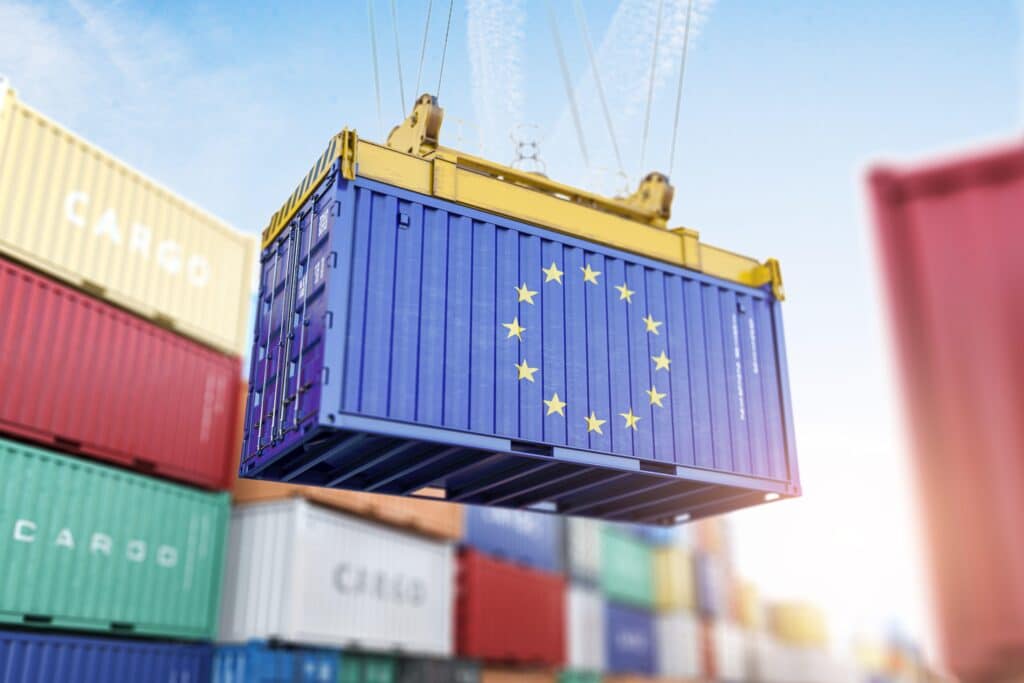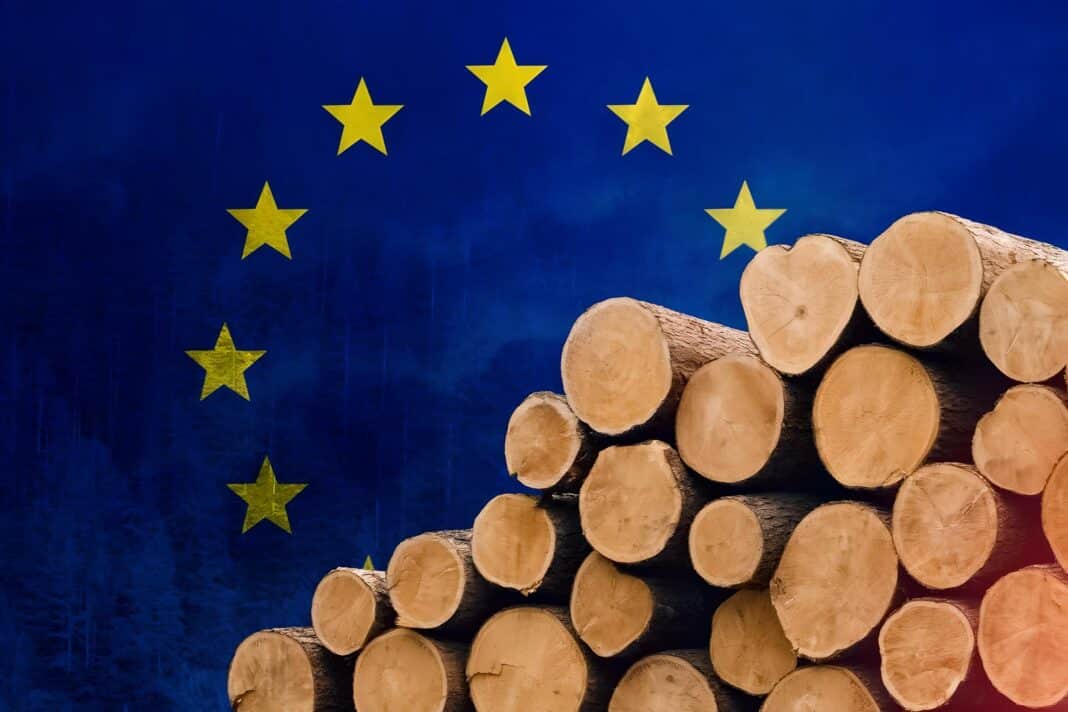Twelve months to the day since the European Parliament approved the European Union Deforestation Regulation—its signature deforestation regulation—global supply chains are grappling with the push to become “EUDR-Ready” in time for December 30, 2024.
And with the clock ticking, there are concerns that the beefed-up legislation could cause a surge in compliance costs—both at the port and through supply chains—with global trade navigating “overly complicated and poorly thought out policies.”
According to S&P Global, that cost has been forecast to be at least US $170m but could balloon to US $2.5b as global forest producers drown in red and green tape. For its measure, the EU anticipates the cost “will need to be absorbed by a reduction of profit by operators along the value chain and/or eventually passed through to the final consumer.”
“First there was denial, and now there is panic,” – according to an expert who has anonymously spoken to Wood Central about the impact of the EUDR – Europe’s signature deforestation regulations – on Australian supply chains for beef and wood. “The EUDR is unique because it is a B2B regulation set up by the EU but enforced by individual EU members.
According to the expert, it’s conceivable that exporters may need to run two separate supply chains, “one that is EUDR-ready, and the other which is not” – it’s up to exporters to “make a commercial and ethical decision whether to stay in EU supply chains.”

The problem with the EUDR is that the framework is designed to capture large-scale land clearing and forest destruction – specifically palm oil and coffee, “but that broad brush is not necessarily fit-for-purpose when talking about Australian forests,” the expert said, who checks the official text for changes daily.
“It’s essential to stay informed with changes to the regulation – which change on an almost daily basis,” they said, “but the definitions, which are in article two of the official text, are what matters for supply chains.”
Importantly, the legislation clearly defines “deforestation,” “deforestation-free,” “non-compliant product,” and “forest,” which is crucial for assessing Australia’s exposure to deforestation – with the EU releasing updated guidance information overnight.
Last week, Greenpeace Australia published a new report assessing Australia’s exposure to beef-related deforestation; however, as per Article 2 of the EUDR, Wood Central understands that Greenpeace’s definition of deforestation will not apply (at this stage) under the EUDR.
“In Australia, the vast majority of trade tied up in EUDR is industry exports, where Australia trades sawlog, woodchip, cattle and some finished sawn wood directly into EU markets or via a third party, such as China,” the expert said. But other industries do have some exposure, “where Australia imports a raw material, like cocoa, makes chocolate and then exports the finished product into European markets.”
However, the EUDR can get messy in enforcement, especially in forestry, where supply chains can mix private and commercial—especially where non-authorised forest contractors are used to supply the timbers.
“Take woodchips. If the manufacturer takes fibre from both plantations and private lands, for example, off agroforestry lands, and if the private land is classified as “deforested,” all woodchips produced from the manufacturer using that source will be considered “deforestation.”
Wood Central understands the overwhelming majority of timbers used in woodchip, saw log and sawn wood all come from forests covered by legislations like the Private Native Forestry Codes of Practice in NSW; nonetheless, in NSW, the Department of Environments incorrectly classifies forestry as “land clearing” – exacerbating the confusion.

But it’s not just the multi-million dollar woodchip market that could be impacted, with Australia’s furniture and engineered wood products industry also tied up with the latest changes. “And this is just the beginning,” according to another source connected to the sourcing of fibre from private lands, who also spoke to Wood Central anonymously.
Global exports of Australian furniture and high-value engineered wood products are growing, with the EU a growing market for these products. With the decision by both the Victorian and the West Australian governments to close State Forests earlier this year, manufacturers are now leaning on private forests to keep their high-value industries alive.
“This has created a squeeze for hardwood timbers needed to manufacture products, and given the reliance on private forests for timbers, these industries could be at risk of being locked out of European markets,” the source told Wood Central.
“The importance of sourcing timber from authorised contractors has never been more important,” with the risk of non-compliance “never greater.”
“The EUDR is incredibly complex,” according to Diana Hallam, CEO of the Australian Forest Products Association, who spoke to Wood Central today. Ms Hallam, who, before taking over as CEO of Australia’s peak body for forest products, was the First Assistant Secretary in the Australian Government Department of Agriculture, Fisheries and Forestry, confirmed that Murray Watt, Australia’s Federal Agriculture, Fisheries and Forestry Minister, was writing to the EU Commissioner for the Environment to raise concerns about the regulation and its impact on trade with the EU.
She added, “It is a good example of top-down, EU-centric rules being imposed on the rest of the world, with little to no thought about how it is actually going to work.”
“There has been no consultation, and as such, the implementation is not practical here in Australia or in many other countries around the world, including the USA, Canada, and EU countries.”
And whilst Australia is “fully supportive of stamping out deforestation in global supply chains,” Australian forestry does not undertake deforestation with the EUDR, as drafted, “not a well thought out way to achieve this goal.”
“Some of the EUDR definitions have no consideration for non-EU ecosystems. For example, bushfires have not been thought about. As we know, sometimes Australian bushfires are so hot that they kill off the native seeds in the soil, and the landscape requires rehabilitation by seedlings or putting out seeds to regenerate. This rehabilitation is prohibited under these EUDR regulations and perversely encourages not rehabilitating these sites.”
How the EUDR will work
- The regulation will assign a low, standard, or high-risk level associated with deforestation and forest degradation to regions within countries inside and outside the EU.
- This risk classification will guide the obligations of various operators and the authorities in member states to perform inspections and controls. Consequently, this will streamline monitoring for high-risk regions and simplify due diligence processes for low-risk regions.
- Authorities responsible for these areas must inspect 9% of operators and traders dealing with products from high-risk regions, 3% from standard-risk areas, and 1% from low-risk regions. This inspection aims to confirm whether they are effectively meeting the obligations stipulated by the regulation.
- Further, these competent authorities will inspect 9% of relevant goods and products either placed on their market, made available, or exported by high-risk regions.
- Lastly, the EU plans to enhance its cooperation with partner countries, focusing primarily on high-risk areas.
For more information, visit Wood Central’s special feature on EUDR and its implications for the global supply chain of forest products from July 2023.






